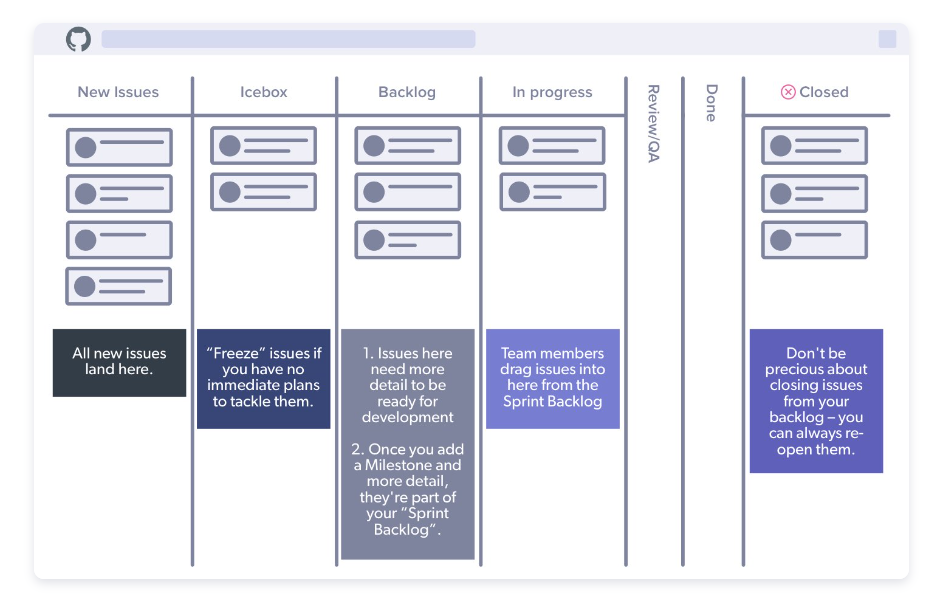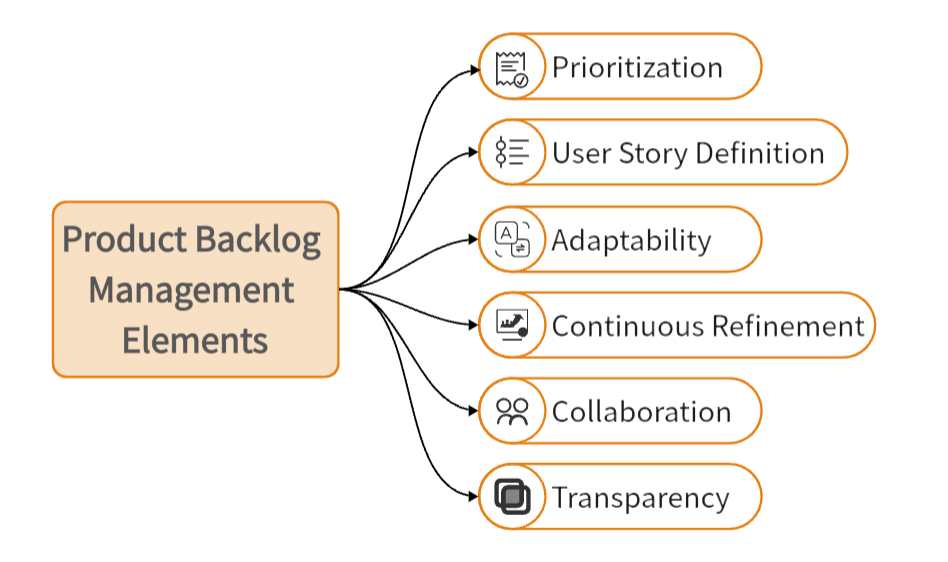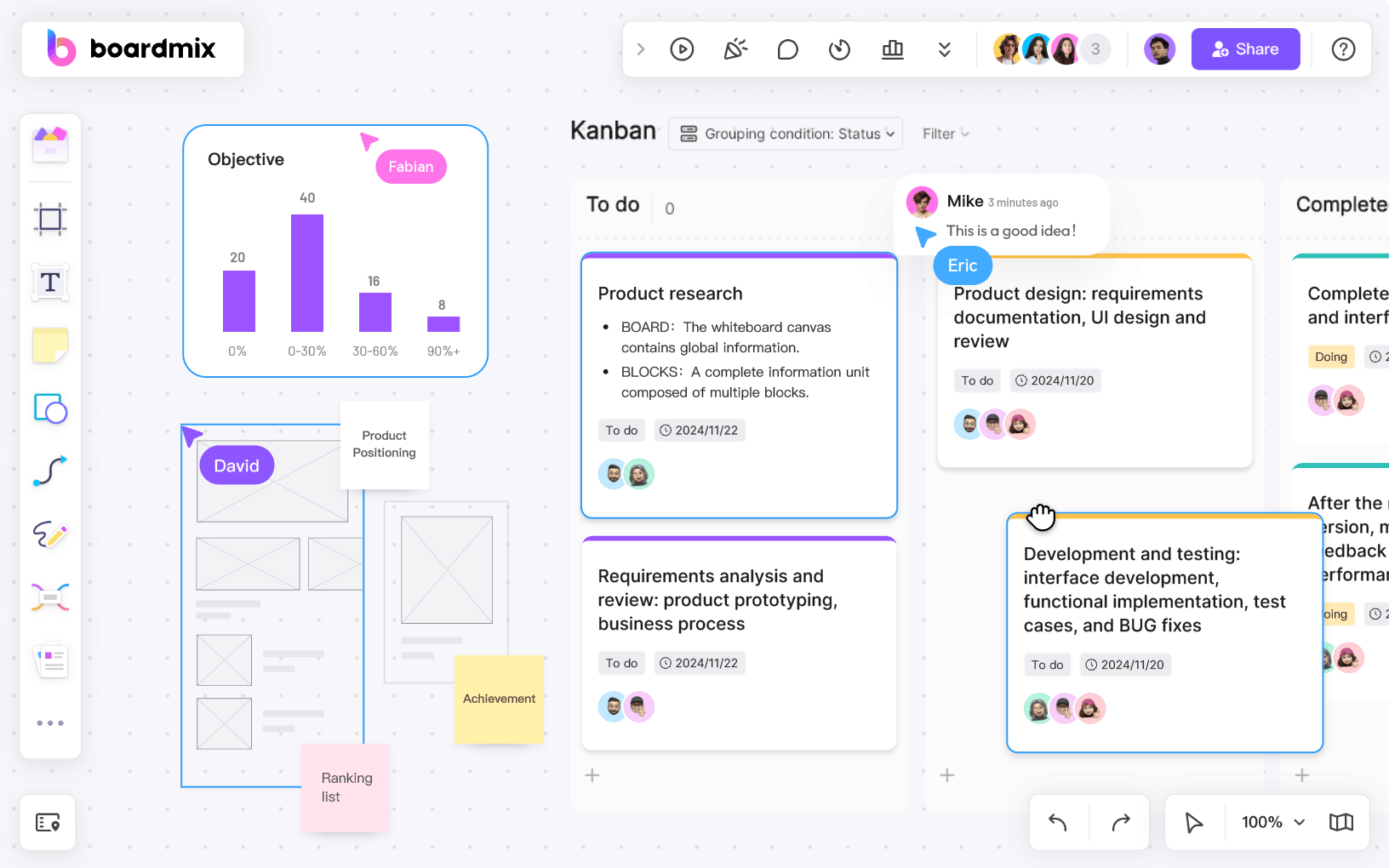In the dynamic world of software development, Agile methodologies have gained significant traction due to their ability to adapt to changing requirements and deliver value iteratively. One crucial aspect of Agile development is effective Product Backlog Management, a practice that plays a pivotal role in ensuring the success of Agile projects. This article delves into the importance of product backlog management and provides insights into best practices for maintaining a healthy and efficient backlog.
Part 1. What is Product Backlog Management?
The Product Backlog serves as the single source of truth for all features, enhancements, and bug fixes that need to be implemented in a product. It is a dynamic document that evolves over time, reflecting the changing needs and priorities of the project. The items in the backlog are prioritized based on their business value, and the backlog itself is a living artifact that requires continuous attention and refinement.

https://help.zenhub.com/support/
Part 2. Why is Product Backlog Management Important?
Product Backlog Management is crucial in the realm of Agile and Scrum methodologies for several reasons:
Prioritization of Work: The product backlog serves as a dynamic to-do list that contains all the features, enhancements, and bug fixes that the team and stakeholders want to see in the product. Managing the backlog involves continually prioritizing and re-prioritizing items based on their value, ensuring that the team works on the most valuable and important tasks first.
Visibility and Transparency: A well-maintained product backlog provides transparency into the work that needs to be done. Stakeholders, including team members, product owners, and other relevant parties, can easily see what is coming up next, facilitating communication and collaboration.
Adaptability to Change: The product backlog is not static; it evolves as the product and project progress. This allows the team to adapt to changes in requirements, market conditions, or other external factors. By regularly reviewing and adjusting the backlog, the team can stay responsive to the evolving needs of the product and its users.
Continuous Improvement: Managing the product backlog is an iterative process. Teams reflect on their performance, gather feedback, and use this information to refine the backlog continuously. This leads to a more efficient and effective development process over time.
In summary, product backlog management is essential for ensuring that the development team works on the right things at the right time, adapting to change, managing risks, and fostering collaboration. It is a key practice in Agile and Scrum frameworks that contributes to the overall success of a product development project.
Part 3. Key Elements of Product Backlog Management

Prioritization:
Prioritizing backlog items is a crucial aspect of product backlog management. This involves assessing the business value, dependencies, and urgency of each item.
Techniques such as MoSCoW prioritization (Must-haves, Should-haves, Could-haves, Won't-haves) and relative weighting help teams make informed decisions about the order of work.
Continuous Refinement:
Backlog refinement is an ongoing process that ensures the backlog remains up-to-date and relevant. Teams collaborate to add details, estimate effort, and break down large items into smaller, manageable tasks.
Regular refinement sessions help in maintaining a healthy backlog that is ready for sprint planning.
User Story Definition:
User stories are the building blocks of the product backlog. They are concise descriptions of a feature or functionality from an end user's perspective.
Well-defined user stories include acceptance criteria, providing clear guidelines for the development team.
Adaptability:
The backlog should be adaptable to changes in market conditions, stakeholder requirements, or feedback from users.
Agile teams embrace change and use the backlog as a tool to respond quickly and effectively to evolving priorities.
Collaboration:
Product backlog management is a collaborative effort involving product owners, development teams, and other stakeholders.
Regular communication and collaboration ensure a shared understanding of priorities and goals.
Transparency:
Transparency is a key principle in Agile development. A transparent backlog allows all team members to understand the current state of the project and upcoming priorities.
Tools such as digital boards and project management software enhance visibility and transparency.
Part 4. Tips for Effective Product Backlog Management
Effective product backlog management is crucial for the success of Agile and Scrum projects. Here are some tips to enhance your product backlog management:
Clearly Define and Prioritize Items:
lClearly define and articulate user stories or backlog items. Use a standard format to provide essential details.
lPrioritize items based on business value, dependencies, and customer needs. Regularly reassess priorities to reflect changing requirements.
Involve Stakeholders:
lCollaborate with stakeholders to gather input and feedback for backlog items.
lEnsure that the product owner collaborates closely with stakeholders to capture and represent their requirements accurately.
Refine Continuously:
lRegularly conduct backlog refinement sessions to add details, clarify requirements, and break down large items into smaller, manageable tasks.
lKeep the backlog up-to-date and reflective of the current understanding of the product.
Estimate Effort:
lUse estimation techniques (e.g., story points) to estimate the effort required for each backlog item. This aids in planning and prioritization.
lDon't forget to update estimates as more information becomes available or as the team gains a better understanding of the work involved.
Keep It Manageable:
lAvoid having an overly long or detailed backlog. Focus on what is essential and relevant for the next few sprints.
lConsider using a backlog grooming or refinement meeting to periodically review and adjust the backlog.
Responsive to Change:
lEmbrace changes and be ready to adapt the backlog as new information or priorities emerge.
lEncourage a mindset of flexibility to respond to market changes or shifting business priorities.
By following these tips, you can streamline your product backlog management process, enhance collaboration, and ensure that the team is consistently delivering value to stakeholders.
Part 5. Best Tool for Effective Product Backlog Management
Boardmix is an innovative online whiteboard tool designed to streamline product backlog management. With our intuitive interface and extensive library of drawing templates, teams can easily visualize, prioritize, and manage their backlog items. Boardmix's dynamic features allow for real-time collaboration, making it easier than ever to keep everyone on the same page. Whether you're breaking down complex tasks into manageable chunks or tracking progress towards your goals, Boardmix is the perfect tool to keep your product development process organized and efficient.

Key features of Boardmix:
- Real-Time Collaboration: Boardmix allows multiple users to work on the same whiteboard simultaneously, making brainstorming and decision-making processes more efficient.
- Extensive Template Library: With a wide range of pre-designed templates, Boardmix makes it easy to start any project or meeting.
- Interactive Whiteboard: The interactive whiteboard feature of Boardmix enables users to draw, write, and add images or notes, fostering creativity and effective communication.
- Task Management: Boardmix's task management feature helps teams prioritize tasks, track progress, and manage workflows efficiently.
- Integration Capabilities: Although currently not integrated with other ecosystems, future updates will allow Boardmix to connect with popular tools like Slack, Trello, and Google Workspace for seamless collaboration.
Conclusion
Effective product backlog management is a cornerstone of successful Agile development. By prioritizing, refining, and adapting the backlog, teams can deliver value continuously, respond to changing requirements, and build products that meet the needs of stakeholders. Embracing the principles of transparency, collaboration, and adaptability, organizations can harness the power of Agile methodologies to navigate the complexities of the modern software development landscape.
Boardmix is the ultimate tool for product backlog management, providing an intuitive platform where teams can visualize and prioritize tasks with ease. Our real-time collaboration feature ensures everyone stays aligned on project goals, while our extensive template library simplifies the process of breaking down complex tasks. Choose Boardmix and experience a more efficient, streamlined approach to managing your product backlog.













